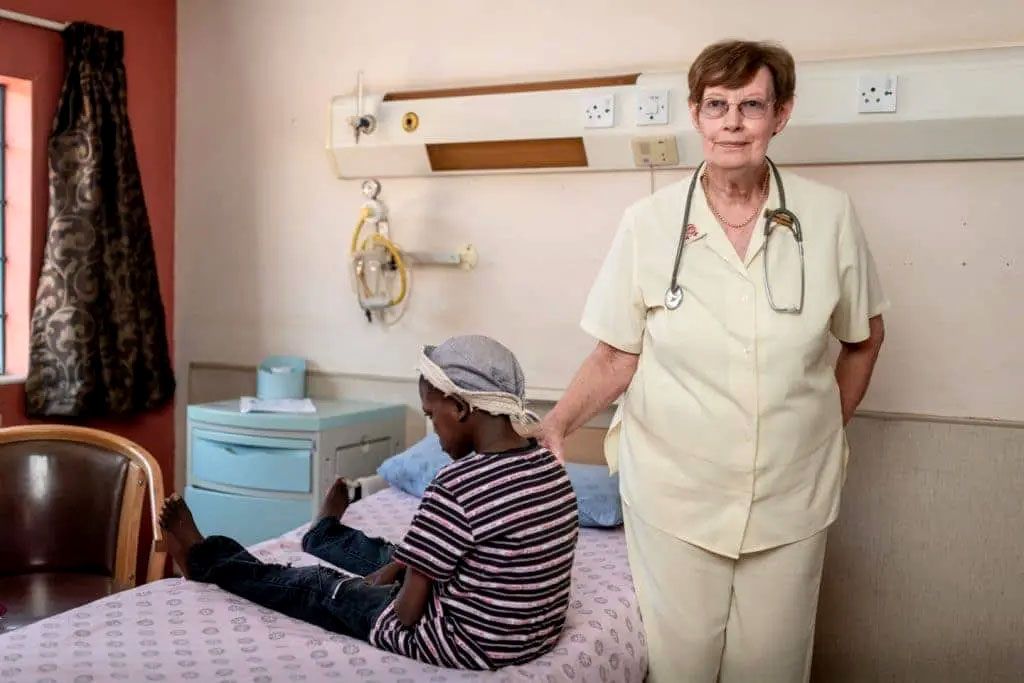SPOTLIGHT
Testing stool may be the answer to better detection of TB in children
Diagnosing tuberculosis is difficult in people who struggle to cough up sputum samples – a particular problem in children and people living with HIV. One promising alternative is to test stool. Tiyese Jeranji unpacks the latest developments in this area.
Most tuberculosis (TB) testing today relies on sputum samples coughed up from the lungs. This makes intuitive sense since pulmonary (or lung) TB is the most common form of TB and sputum provides testable samples straight from the scene of infection.
A major snag, however, is that children and some people living with HIV find it difficult or impossible to cough up the sputum needed for testing. The resulting delays or uncertainties in diagnosis often have knock-on effects on treatment.
“Confirming TB in children is challenging as the disease is frequently paucibacillary (which means the amount of TB in test samples is low and hard to detect),” says Dr Pedro da Silva, operations manager and mycobacteriologist at the Wits Diagnostic Innovation Hub and the National Priority Programme of the National Health Laboratory Service (NHLS).
“Children find it difficult to expectorate (cough up a specimen) and when it is possible, the specimen volume may be suboptimal. To get a good respiratory specimen from a child, more invasive methods are frequently used, such as sputum induction. Often, skill sets to conduct the procedure or specialised equipment are unavailable. Caregivers may also refuse the invasive procedures.”
The race is thus on to find TB tests that do not rely on sputum.
Blood, urine and saliva are all candidates, as increasingly is stool. While all these have pros and cons and while the evidence base is still evolving, there seems to be a compelling case for the wider use of stool samples.
Already recommended by WHO
Dr Anna Mandalakas, a paediatric specialist, chief of the section on global and immigrant health and director of the Global Tuberculosis Program at Texas Children’s Hospital, tells Spotlight that over the past decade an increasing amount of research has been completed to study the use of stool samples for the laboratory confirmation of TB disease. Their Baylor Global TB team recently demonstrated that, in addition to just testing for TB, testing stool samples using gene-sequencing technology can determine whether someone’s TB is resistant to medicines used to treat TB. As Spotlight recently reported, such drug-susceptibility testing is becoming increasingly common.
Read in Daily Maverick: “Experts call for better screening and treatment of TB during pregnancy”
The research is sufficiently advanced that, in 2021, the World Health Organization (WHO) recommended the use of stool as a new sample type when diagnosing TB in children. In 2022, it published guidelines on how to do these tests.
According to Petra de Haas, technical officer of laboratory services at the KNCV Tuberculosis Foundation, at least three countries (Vietnam, Zambia and Ukraine) have already adopted stool testing in their guidelines for routine testing, six countries are doing pilot implementations, and many others are preparing for the implementation of stool testing.
Stool-based TB diagnosis is not yet being implemented in South Africa. But, according to da Silva, the addition of stool as an additional specimen type for TB diagnosis in children in the country is under discussion and implementation is being planned with introduction likely to be in 2023.
Why stool testing works
While sputum samples have the advantage of coming straight from the lung, the TB bacteria present in stool samples have taken something of a detour.
“Many people with TB in their lungs swallow their sputum, which contains TB organisms,” explains Dr Gary Reubenson, a specialist in paediatric infectious diseases at the department of paediatrics and child care in the Empilweni Service and Research Unit at Rahima Moosa Mother and Child Hospital. “These don’t usually survive in our intestines, but their DNA can sometimes be detected in their stool. This could help us diagnose TB when we’re struggling using other methods.”
“For a long time,” says De Haas, “stool was considered a difficult sample for diagnosing bacterial diseases, as it contains a lot of other bacteria and organic material which interfere with diagnostic tests.”
This, however, changed with the introduction of rapid molecular tests that can detect genetic material from the TB bacterium.
The good news here is that the same molecular testing platform (GeneXpert) widely used in South Africa to test sputum samples for TB can also be used to test stool samples. But, as Reubenson points out, there are some differences in how samples are processed before being tested.
Eligibility and sample collection
Da Silva says the use of stool as a diagnostic test for TB using the currently available molecular test is only recommended for children under the age of 10. “In other age groups, the current sputum and extra-pulmonary specimen types can be tested depending on signs and symptoms and presenting features of the disease. In individuals with advanced HIV infection where expectoration of sputum may be difficult, alternative tests can be performed such as detection of lipoarabinomannan in urine specimens (using the point-of-care urine-LAM assay),” he says.

The Tshepong TB unit in Klerksdorp. (Photo: Thom Pierce / Spotlight)
The WHO’s practical manual for processing stool samples for diagnosis of childhood TB suggests that stool collection should usually be done by the caregivers or the patients themselves, depending on the age of the child. “Ideally, the collection takes place at the healthcare facility. However, to obtain a specimen on demand is often challenging, therefore stool is collected at home and the patient or caregiver needs to return to the facility for specimen submission,” reads the manual.
Visit Daily Maverick’s home page for more news, analysis and investigations
Stool samples do not have any special storage requirements, according to Reubenson. “They are put into the same containers that are often used when collecting sputum and then taken to the Xpert machine. These machines can be found in lots of places in South Africa; many laboratories have them, but some clinics and hospitals too,” he says.
“The test concludes whether TB bacilli are present in the stool sample and quantifies the number of bacteria. It also reports if there are mutations in the DNA that lead to resistance to one of the first-line anti-TB drugs called rifampicin,” says De Haas.
It takes two hours to run the test, but since samples often have to be transported from health facilities to labs, the time from handing over a sample to getting a result can be much longer.
Stool compared with other methods
“Current evidence suggests that the performance of GeneXpert is similar for sputum and stool specimens. There is a need for more evidence examining the performance of GeneXpert on various specimens provided by different populations, particularly children and people living with HIV,” says Mandalakas.
Morten Ruhwald, director of the TB programme at the Foundation for Innovative Diagnostics, concurs that stool-based testing seems comparable to sputum-based testing and points out that the two methods are complementary.
“The added value of this test is the fast time to diagnosis and the more accessible sample. It addresses a major gap we have in childhood TB which affects 1.1 million children every year, of whom only 400,000 get notified and more than 200,000 die,” he says.
Thus far, it seems that the sensitivity of stool testing is higher than that for tongue and urine samples, says De Haas. But she goes on to stress that more research is needed to investigate this.
According to systematic reviews cited in the WHO guideline for stool testing in kids, sensitivity using current molecular tests is in the region of 50% to 67%, and specificity between 98% and 99%. This indicates that, while false negatives are relatively common, false positives are rare. For comparison, sensitivity of sputum-based molecular TB tests in adults is well above 80% (although this applies only to people who can produce sputum).
Positive signs
Though not yet widely used, there are already some signs that stool testing is helping to boost TB diagnosis in kids.
“The example of Zambia shows that implementation of stool testing for children substantially increases the number of TB patients notified and the proportion of notified TB patients with bacteriologically confirmed TB,” says De Haas. She says during a pilot implementation study in the Democratic Republic of Congo, 15% of the children who were presumed to have TB tested positive for TB. “This is a high proportion. Previously, nearly all these children would not have had access to a bacteriological test,” she says. She adds that for a few of these children, the detected TB bacteria were shown to be resistant to the drug rifampicin, which meant that effective treatment could be initiated immediately and mortality reduced. DM/MC
This article was published by Spotlight – health journalism in the public interest.





















Comments - Please login in order to comment.